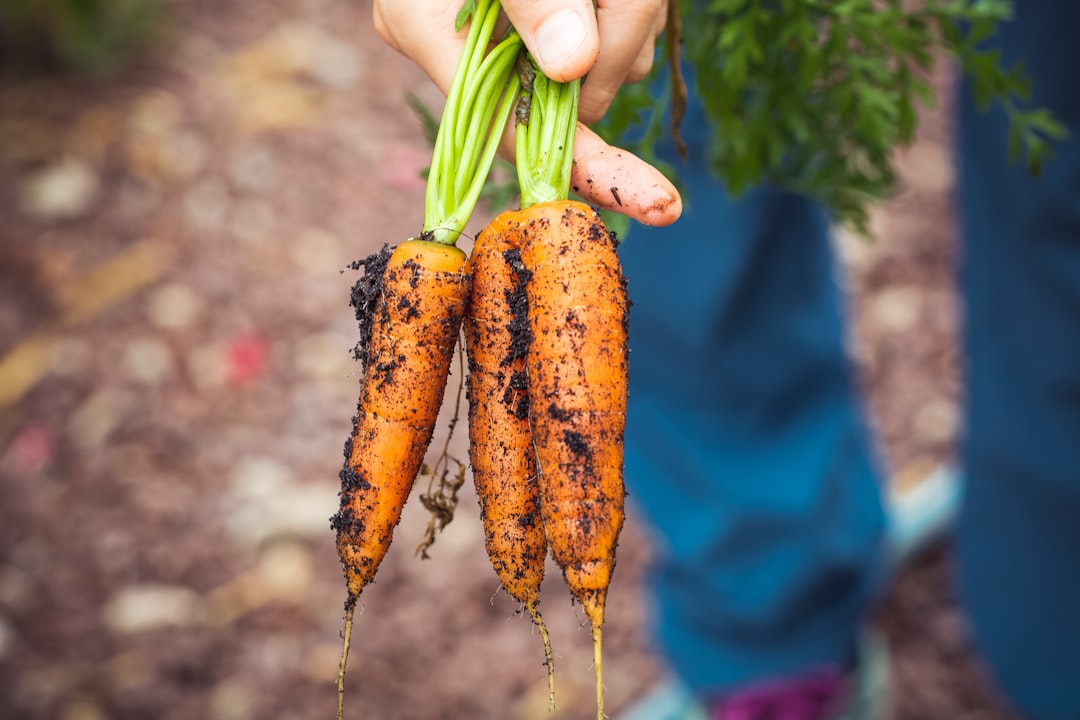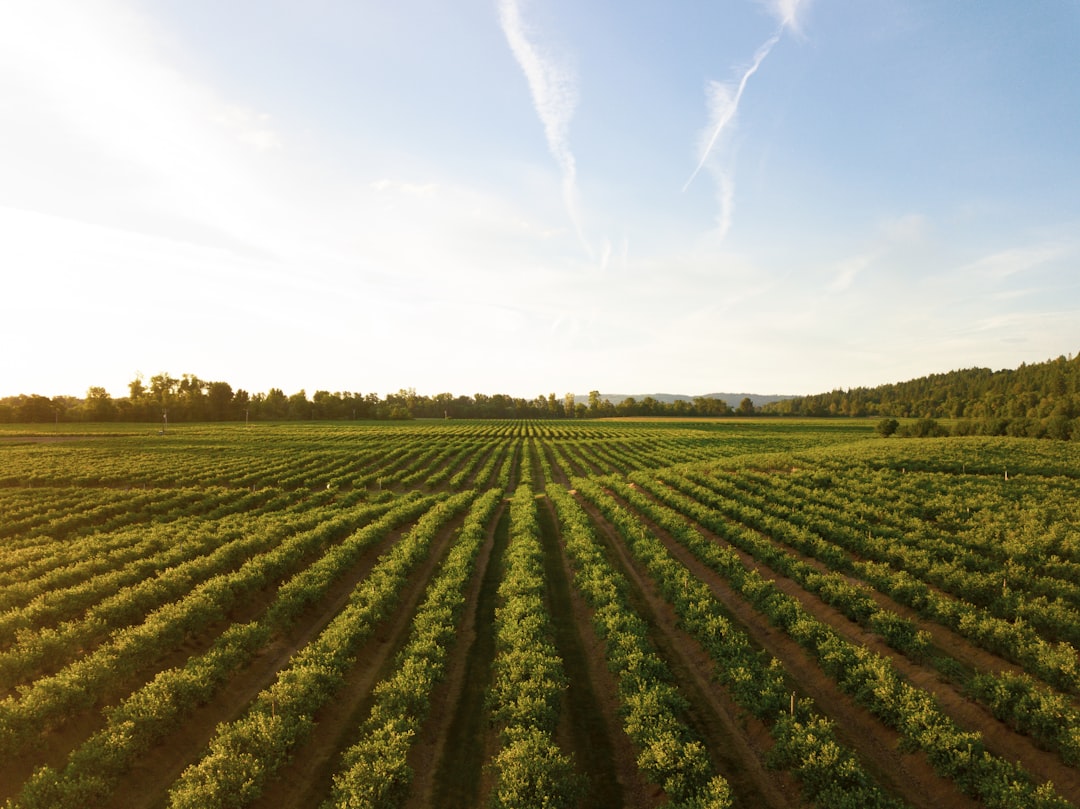Sustainability has become a buzzword in recent years, and the food industry is no exception. Consumers are more conscious than ever of their impact on the planet and are demanding companies to operate in an environmentally-friendly way. This has led to a growing focus on sustainable living in the food industry, which involves reducing food waste, sourcing food locally, and farming organically.
The world’s population is constantly growing, and it’s projected that by 2050, we will have over 9 billion people to feed. It is crucial that we adopt sustainable practices to ensure that we can continue to sustainably feed our rapidly expanding population without damaging the planet we call home.
In this blog post, we are going to explore the importance of sustainable living in the food industry. We will discuss the benefits of farming organically, farm-to-table restaurants, the role of community supported agriculture (CSA) programs, how to reduce food waste, innovations and trends, and why embracing sustainable living is essential for a better tomorrow.
So, grab a cup of coffee, sit back, and let’s dive into the world of sustainable living in the food industry.
The Benefits of Farming Organically: Why We Need to Go Back to Basics
In recent times, the issue of sustainable living has become a popular topic of conversation, especially as it pertains to food production and consumption. Organic farming has emerged as a vital component of sustainable living, and its benefits cannot be overemphasized. This section will explore the benefits of organic farming and why we need to pay more attention to it.
Organic farming involves the use of natural methods to grow crops and rear animals. It eschews the use of synthetic pesticides and fertilizers, instead relying on organic alternatives such as compost, manure, and other natural substances. This method of farming has several benefits, including a reduced carbon footprint, improved soil fertility, and better animal welfare.
One of the biggest challenges facing the food industry is the negative impact of food production on the environment, which contributes significantly to climate change. Organic farming helps to mitigate this problem by reducing greenhouse gas emissions and increasing carbon sequestration. Organic soil has the ability to absorb and hold more carbon dioxide than conventional soil, making it an ideal tool for mitigating climate change.
Another significant benefit of organic farming is improved soil fertility. Organic farming practices help to maintain biodiversity and increase the presence of soil microorganisms, which are essential for nutrient cycling and soil health. Organic farming also helps to reduce soil degradation caused by erosion and chemical contamination, leading to healthier and more productive soils.
Animal welfare is also a significant consideration in organic farming. Organic farmers focus on providing a natural and healthy environment for their animals, ensuring that they are raised in humane conditions. This focus on animal welfare helps to improve the quality of the meat produced and reduces the need for antibiotics and other drugs, which can be harmful to both humans and animals.
In conclusion, organic farming is a key component of sustainable living and offers several benefits to both the environment and humans. As a society, we must prioritize and invest in organic farming to achieve long-term sustainability.
This section will explore the benefits of organic farming and why we need to pay more attention to it.
Farm-to-Table Restaurants: Bringing Fresh and Local Produce to Your Plate
The farm-to-table movement has gained massive popularity in recent years. Simply put, farm-to-table dining implies that the food is sourced from the farm and cooked in the restaurant shortly after it is harvested. This concept ensures that the produce used in the restaurant is fresh, seasonal, and locally grown.
Farm-to-table dining not only benefits the customers but also the local farmers who grow and supply the produce. By purchasing directly from the farmers, you are supporting the local economy and promoting sustainable agriculture. This results in better quality produce since it hasn’t been subjected to long-distance transportation and has been cultivated through natural methods without the use of harmful chemicals.
In addition to the benefits of fresh and delicious food, farm-to-table restaurants offer a uniquely immersive dining experience. You can watch the chefs at work as they prepare dishes using fresh ingredients from the farm. Some restaurants even allow customers to take a tour of the farm and witness the process of food growing and harvesting.
Moreover, farm-to-table dining encourages mindful eating and educates people about the importance of sustainability. It prompts people to think about where their food comes from, how it is grown, and how it affects the environment. This level of consciousness is essential for creating a more responsible and sustainable food industry.
In conclusion, farm-to-table dining presents a win-win situation for both the consumers and farmers. It promotes healthy eating, supports sustainable agriculture, educates people about food, and offers a unique dining experience. By choosing to dine at farm-to-table restaurants, you are making a conscious choice to support sustainable living and help build a better tomorrow.
It prompts people to think about where their food comes from, how it is grown, and how it affects the environment.
The Role of Community Supported Agriculture (CSA) Programs in Sustainable Living
Community Supported Agriculture (CSA) is a sustainable agriculture model that has gained popularity in recent years. The CSA model involves a direct partnership between farmers and consumers, where consumers commit to buying a share of the farm’s harvest, and in return, they receive a weekly box of fresh, locally grown produce.
The CSA model has numerous benefits, including supporting small-scale farmers, reducing the carbon footprint of food transportation, and providing consumers with an opportunity to develop a deeper connection with the food they eat.
CSA programs also address some of the challenges faced by small-scale farmers. With a stable customer base, farmers can better plan for their harvest and reduce waste. CSA membership also provides farmers with a guaranteed income, which helps them to sustain their farm and provide for their families.
In addition to supporting small-scale farmers, CSA programs also promote sustainable practices. By reducing the distance between where food is produced and where it is consumed, CSA programs reduce the carbon footprint of food transportation.
Furthermore, CSA programs often provide consumers with education on sustainable agriculture practices. Many CSA programs host farm tours or workshops, where consumers can learn about the growing process, the benefits of organic farming, and how they can grow their food sustainably at home.
Overall, CSA programs play a vital role in promoting sustainable agriculture and reducing the environmental impact of the food industry. By connecting consumers with their food and supporting small-scale farmers, CSA programs offer a powerful tool for building a more sustainable future.
Furthermore, CSA programs often provide consumers with education on sustainable agriculture practices.
Reducing Food Waste: How to Make the Most of Your Farm-to-Table Experience
As we become more aware of our impact on the environment, reducing food waste has become an important part of sustainable living. The farm-to-table movement can play a significant role in minimizing food waste by encouraging the use of fresh, locally-sourced produce.
One of the benefits of farm-to-table dining is that it often includes more unusual, locally-grown fruits and vegetables that you may not find in a typical grocery store. This is a great opportunity to get creative with your cooking and try out new recipes. But what do you do when you find yourself with a surplus of produce that you don’t know what to do with?
One solution is to preserve your produce. You can freeze berries, make jams or pickles, or even dry herbs to use later. This not only helps prevent food waste, but it also allows you to enjoy the flavors of local produce all year round.
Another way to reduce waste is to compost any leftover scraps or trimmings. Composting allows you to turn these food scraps into nutrient-rich soil that can be used to grow more produce.
Shopping at the farmers’ market or joining a Community Supported Agriculture (CSA) program can also help reduce food waste. When you buy directly from a farmer or sign up for a CSA share, you are receiving fresh produce that was harvested just a day or two ago. This means that the food you are purchasing is at the peak of its freshness and will last longer than produce that has been shipped across the country.
Finally, it’s important to be mindful of portion sizes when dining out at farm-to-table restaurants. It can be tempting to order multiple dishes to try everything, but this can lead to food waste if you don’t finish everything on your plate. Consider sharing dishes with your dining companions or ordering a la carte instead of a multi-course meal.
By taking these small steps to reduce food waste, we can not only help the environment but also support local farmers and enjoy the delicious flavors of fresh, locally-sourced produce.
Composting allows you to turn these food scraps into nutrient-rich soil that can be used to grow more produce.
The Future of Sustainable Living: Innovations and Trends in the Food Industry
As we move towards a more sustainable future, the food industry has a critical role to play in shaping our efforts. While there are already many initiatives underway that promote sustainable living practices, there are also a host of innovations and trends that are emerging that may help to further these efforts in the years to come.
One trend that is gaining traction in the food industry is the development of new plant-based products that mimic the taste and texture of meat. From the Impossible Burger to Beyond Meat, companies are investing heavily in alternative protein sources that have a lower environmental impact than traditional livestock farming. This trend is not only better for the environment, but it also addresses concerns around animal welfare and provides consumers with healthier options.
Another trend that is gaining momentum in the food industry is the use of blockchain technology to enhance supply chain transparency. Through blockchain, suppliers can track every step of the production process, from farm to table. This not only helps to reduce waste and inefficiencies but also provides consumers with more information about where their food comes from and how it was produced.
Additionally, innovations in vertical farming and urban agriculture are making it possible to grow food in urban areas, reducing the distance that food needs to travel to reach consumers. By growing food closer to where it is consumed, these practices can also reduce the carbon emissions associated with transportation and ensure that consumers have access to fresh, healthy produce year-round.
Finally, advances in packaging and labeling are helping consumers to reduce food waste. For example, companies are now using compostable packaging materials, as well as developing smart labels that indicate when food is nearing its expiration date. These innovations encourage consumers to take action to reduce food waste in their own homes, further contributing to sustainable living.
Overall, the future of sustainable living in the food industry is bright, with countless innovations and trends emerging that have the potential to make the sector more environmentally-friendly and socially responsible. By committing to these trends, we can help to drive significant changes that will benefit us all in the years to come.
Additionally, innovations in vertical farming and urban agriculture are making it possible to grow food in urban areas, reducing the distance that food needs to travel to reach consumers.
Conclusion: Embracing Sustainable Living for a Better Tomorrow
In conclusion, it’s safe to say that sustainable living is crucial for a better tomorrow, particularly in the food industry. We must make every effort to change our current practices and embrace sustainability as a principle. We all rely on food to survive, and so we must be more mindful of how we produce, consume, and discard it.
We’ve discussed the essential role of farming organically and the value of going back to basics. By cultivating without synthetic pesticides and fertilizers, we can guarantee healthier foods while also protecting the environment. We’ve explored Farm-to-Table restaurants and how they are making an impact by providing fresh and locally grown produce to consumers. We’ve also looked at the important part that Community Supported Agriculture (CSA) programs play in supporting sustainable living.
Moreover, we’ve seen how reducing food waste can significantly impact sustainable living. By making the most of our Farm-to-Table experience, we can minimize waste and contribute to a better and more sustainable future. Finally, we’ve examined the innovation and trends shaping the food industry in the quest for sustainable living.
As we’ve seen, sustainable living is not only feasible, but it’s also essential for our health and the environment. We must come together as a community and take active steps to support sustainable living. With each action, practice, and conscious decision we make, we contribute to a better future for our planet and future generations. Let’s embrace sustainable living today, and together, we’ll create a better tomorrow for all.





